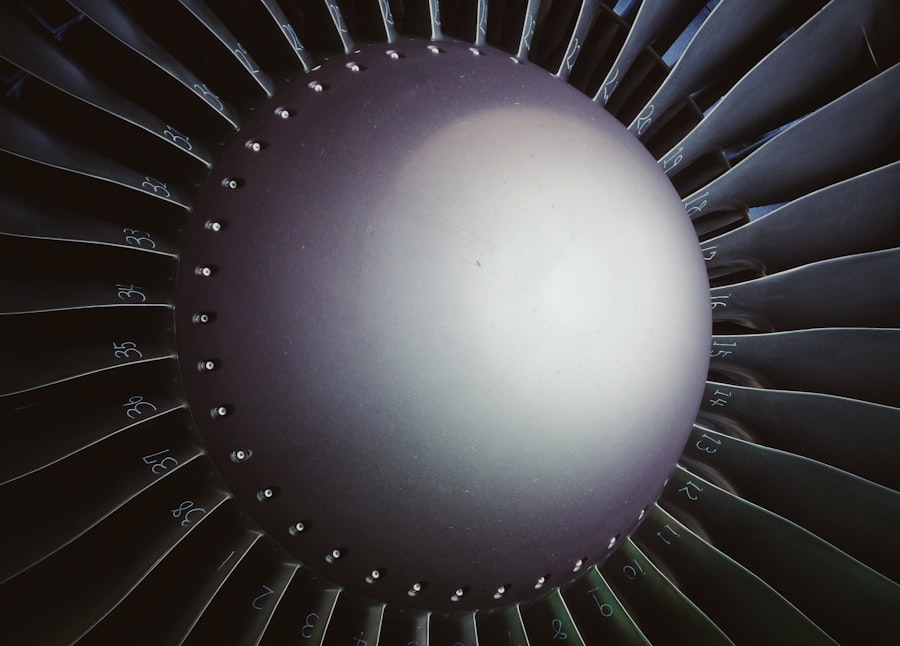The evolution of aerospace technology is a fascinating journey that spans over a century, marked by remarkable milestones and transformative innovations. The early 20th century witnessed the Wright brothers’ historic flight in 1903, which laid the groundwork for modern aviation. This initial foray into powered flight was rudimentary, relying on simple materials and basic aerodynamic principles.
However, it ignited a wave of interest and investment in aviation, leading to rapid advancements. By the end of World War I, aircraft had evolved significantly, transitioning from canvas and wood structures to more robust designs featuring metal frames and improved engines. This period also saw the introduction of military aviation, which spurred technological advancements driven by the demands of warfare.
The interwar years were characterized by a surge in commercial aviation, with airlines emerging as key players in the industry. The introduction of all-metal aircraft, such as the Douglas DC-3 in the 1930s, revolutionized air travel by offering greater safety, reliability, and passenger comfort. The post-World War II era marked another significant leap forward, as jet propulsion technology transformed air travel.
The Boeing 707, introduced in the late 1950s, was among the first commercial jetliners to achieve widespread success, enabling transcontinental and transatlantic flights that connected the world like never before. This period also saw the advent of supersonic flight with the Concorde, which pushed the boundaries of speed and efficiency in aviation.
Key Takeaways
- Aerospace technology has evolved significantly over the years, leading to advancements in materials, aerodynamics, propulsion, space exploration, artificial intelligence, aerospace medicine, and environmental sustainability.
- Breakthroughs in materials and manufacturing have revolutionized aerospace technology, leading to the development of lighter, stronger, and more durable materials for aircraft and spacecraft construction.
- Advancements in aerodynamics and propulsion have improved the efficiency and performance of aerospace vehicles, leading to faster and more fuel-efficient aircraft and spacecraft.
- Innovations in space exploration have enabled the exploration of new frontiers, including the development of reusable rockets, space tourism, and the potential for human colonization of other planets.
- The impact of artificial intelligence and machine learning in aerospace has led to the development of autonomous systems, predictive maintenance, and improved safety and efficiency in aerospace operations.
Breakthroughs in Materials and Manufacturing
The aerospace industry has consistently pushed the envelope in materials science and manufacturing techniques, leading to significant breakthroughs that enhance performance and safety. One of the most notable advancements has been the development of composite materials, which combine multiple substances to create lightweight yet strong structures. Carbon fiber reinforced polymers (CFRP) are now widely used in aircraft construction due to their high strength-to-weight ratio.
For instance, the Boeing 787 Dreamliner incorporates approximately 50% composite materials, resulting in reduced fuel consumption and increased range compared to traditional aluminum aircraft. In addition to composites, additive manufacturing—commonly known as 3D printing—has emerged as a game-changer in aerospace manufacturing. This technology allows for the creation of complex geometries that were previously impossible or prohibitively expensive to produce using traditional methods.
Companies like GE Aviation have harnessed 3D printing to manufacture critical engine components, such as fuel nozzles, which can be produced with reduced waste and shorter lead times. The ability to rapidly prototype and iterate designs has accelerated innovation cycles within the industry, enabling engineers to test new concepts more efficiently.
Advancements in Aerodynamics and Propulsion

Aerodynamics plays a crucial role in determining an aircraft’s performance, efficiency, and safety. Over the years, significant advancements have been made in understanding airflow dynamics and optimizing aircraft designs accordingly. Computational fluid dynamics (CFD) has revolutionized aerodynamic analysis by allowing engineers to simulate airflow over complex shapes with unprecedented accuracy.
This technology has led to the development of more aerodynamically efficient wing designs, such as winglets that reduce drag and improve fuel efficiency. Propulsion systems have also seen remarkable advancements, particularly with the development of high-bypass turbofan engines. These engines are designed to maximize thrust while minimizing fuel consumption and noise pollution.
The Pratt & Whitney Geared Turbofan engine is a prime example of this innovation, featuring a unique gear system that allows the fan to spin at a different speed than the engine core. This design enhances efficiency and reduces emissions, making it a popular choice for modern commercial aircraft. Furthermore, research into alternative propulsion systems, such as electric and hybrid-electric engines, is gaining momentum as the industry seeks to reduce its carbon footprint.
Innovations in Space Exploration
| Spacecraft | Year | Destination |
|---|---|---|
| Vostok 1 | 1961 | Low Earth Orbit |
| Apollo 11 | 1969 | Moon |
| Viking 1 | 1976 | Mars |
| Voyager 1 | 1977 | Interstellar Space |
The realm of space exploration has witnessed extraordinary innovations that have expanded our understanding of the universe and our capabilities beyond Earth. The launch of Sputnik by the Soviet Union in 1957 marked humanity’s first venture into space, igniting a space race that would lead to monumental achievements such as the Apollo moon landings. Since then, advancements in rocket technology have enabled increasingly ambitious missions, including Mars rovers like Curiosity and Perseverance, which are equipped with sophisticated scientific instruments to analyze the Martian environment.
In recent years, private companies have emerged as key players in space exploration, driving innovation through competition and collaboration with government agencies. SpaceX’s Falcon 9 rocket has revolutionized access to space by significantly reducing launch costs through reusable rocket technology. This paradigm shift has opened up new possibilities for satellite deployment, space tourism, and even interplanetary missions.
Additionally, NASA’s Artemis program aims to return humans to the Moon by 2024 and establish a sustainable presence there as a stepping stone for future missions to Mars.
The Impact of Artificial Intelligence and Machine Learning
Artificial intelligence (AI) and machine learning (ML) are transforming various sectors within aerospace by enhancing decision-making processes and operational efficiencies. In aircraft design and manufacturing, AI algorithms can analyze vast datasets to identify patterns and optimize designs for performance and safety. For instance, machine learning models can predict potential failure points in aircraft systems based on historical data, allowing for proactive maintenance strategies that minimize downtime and enhance safety.
Moreover, AI is playing a pivotal role in air traffic management systems. With increasing air traffic congestion, traditional methods of managing flight paths are becoming inadequate. AI-driven systems can analyze real-time data from multiple sources to optimize flight routes dynamically, reducing delays and fuel consumption.
Additionally, autonomous systems are being developed for unmanned aerial vehicles (UAVs), enabling them to navigate complex environments without human intervention. These advancements not only improve operational efficiency but also pave the way for new applications in logistics, surveillance, and disaster response.
Discoveries in Aerospace Medicine and Human Factors

Aerospace medicine is a critical field that focuses on understanding how flight affects human physiology and performance. As aircraft fly at higher altitudes and speeds, pilots and passengers are exposed to unique challenges such as reduced oxygen levels and increased radiation exposure. Research in this area has led to significant discoveries regarding hypoxia—oxygen deprivation—and its effects on cognitive function and decision-making under stress.
Understanding these factors is essential for ensuring pilot safety and optimizing cockpit design. Human factors engineering is another vital aspect of aerospace design that seeks to enhance user experience and safety through ergonomic considerations. The design of cockpit interfaces has evolved significantly over the years, incorporating principles from cognitive psychology to improve pilot situational awareness.
For example, modern cockpits utilize advanced displays that present critical information in intuitive formats, reducing cognitive load during high-stress situations. Additionally, training programs have been developed to address human factors issues, emphasizing teamwork and communication among crew members to mitigate errors during flight operations.
Environmental Sustainability in Aerospace
As global awareness of climate change intensifies, the aerospace industry is increasingly focused on environmental sustainability initiatives aimed at reducing its ecological footprint. One of the primary strategies involves improving fuel efficiency through technological advancements in aircraft design and propulsion systems. The International Air Transport Association (IATA) has set ambitious targets for reducing carbon emissions per passenger kilometer by 50% by 2050 compared to 2005 levels.
Achieving these goals requires ongoing investment in research and development of cleaner technologies. In addition to improving fuel efficiency, there is a growing emphasis on alternative fuels within the aerospace sector. Sustainable aviation fuels (SAFs), derived from renewable sources such as biomass or waste materials, offer a promising solution for reducing greenhouse gas emissions associated with traditional jet fuels.
Airlines are increasingly investing in SAF production facilities and partnerships to facilitate their adoption across fleets. Furthermore, regulatory frameworks are evolving to support these initiatives by providing incentives for airlines that commit to sustainable practices.
Future Trends and Opportunities in Aerospace Research
Looking ahead, several trends are poised to shape the future of aerospace research and development. One significant area of focus is urban air mobility (UAM), which envisions a network of aerial vehicles operating within urban environments for transportation purposes. Companies like Joby Aviation and Volocopter are developing electric vertical takeoff and landing (eVTOL) aircraft designed for short-distance travel within cities.
As urban populations continue to grow, UAM presents an innovative solution for alleviating traffic congestion while providing efficient transportation options. Another promising avenue is the exploration of hypersonic flight—traveling at speeds greater than Mach 5—which could revolutionize long-distance travel by significantly reducing flight times across continents. Research into hypersonic technologies is ongoing at various institutions worldwide, with potential applications ranging from commercial air travel to military operations.
Additionally, advancements in quantum computing hold promise for solving complex problems within aerospace engineering that were previously deemed insurmountable due to computational limitations. By harnessing quantum algorithms, researchers may be able to optimize designs more effectively or simulate intricate physical phenomena with unprecedented accuracy. As these trends unfold, collaboration between academia, industry stakeholders, and government agencies will be essential for driving innovation forward while addressing challenges related to safety, regulation, and public acceptance within the aerospace sector.


